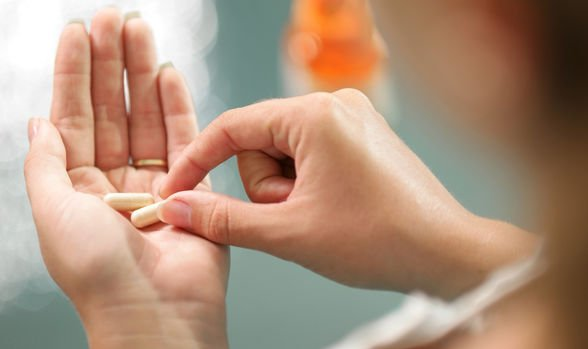The World Health Organization (WHO) presented findings of extensive overuse of antibiotics during the peak years of the COVID-19 pandemic, which may have made the already existing threat of antimicrobial resistance much worse.1
The WHO has called antibiotic resistance one of the greatest global public health threats.2 According to the U.S. Centers for Disease Control and Prevention (CDC), health care providers still continue to overprescribe antibiotics—with at least 30 percent of antibiotics prescribed potentially unnecessary.3 In recent years, the percentage of overprescribed antibiotics was significantly higher worldwide.
Data gathered from 65 countries from January 2020 to March 2023 found that only eight percent of patients hospitalized with COVID had bacterial co-infections requiring antibiotics, yet approximately 75 percent of patients were treated with antibiotics “just in case.” Antibiotic use ranged from 33 percent for patients in the Western Pacific Region of the world to 83 percent in the Eastern Mediterranean and African Regions. Statistically, antibiotic use did not improve outcomes for patients with COVID and may have created harm for people without bacterial infections.1
Antimicrobial Overuse Leading to Bacterial Superbugs
Antimicrobial resistance is caused by the overuse of substances like antibiotics, antivirals, and antifungals that are widely administered to humans and livestock and sprayed on crops. Over time, these living microbes evolve and become resistant to the biological products like antibiotics that are designed to kill them, transforming them into “super bugs.” 2 Pharmaceutical companies have largely abandoned the quest to develop new antibiotics because they allege it is not profitable.4 5
“When a patient requires antibiotics, the benefits often outweigh the risks associated with side effects or antibiotic resistance. However, when they are unnecessary, they offer no benefit while posing risks, and their use contributes to the emergence and spread of antimicrobial resistance,” said Silvia Bertagnolio, MD of the WHO. “These data call for improvements in the rational use of antibiotics to minimize unnecessary negative consequences for patients and populations.”1
Overexposure to Antibiotics Causes Long Term Consequences
The gut microbiome is a complex network of microorganisms and when perturbed by antibiotics, may results in numerous infectious and autoimmune disease. Antibiotics indiscriminately target both helpful and harmful bacteria which can then often be a risk factor for the development of other diseases, especially with excessive exposures.6
Children under age two seem to be especially susceptible to the unintended consequences of repeat antibiotic exposure with greater risks of asthma, allergies, eczema, celiac disease, obesity, attention deficit hyperactivity disorder (ADHD), and more susceptibility to infections later in life.7 8
In a 2020 study published in the journal Frontiers in Pediatrics, researchers Sudhanshu Shekhar and Fernanda Cristina Petersen wrote:
In comparison with adults, antibiotic treatments in infants have disproportionate consequences because the infant microbiota represents an evolving system that is unstable and immature until two to three years of age.8
Research on Harms of Misused Antibiotics Can Take Years to Reach Medical Practice
Antibiotics are often wrongly perceived as a safety net or catch-all when attempting to figure out why a patient is sick. Abuse of antibiotic prescription can be driven by other factors including patient satisfaction and pressure, time constraints, decision fatigue, uncertain diagnoses, and the assumption that other doctors are the problem.9
Guidelines and strategies have been in place to better educate doctors on appropriate antibiotic and harmful effects of over-prescription, but it may take years to break up the culture of inappropriate prescribing. In fact, on average it takes 17 years for current health research to reach clinical practice.10
“Physicians are taught to first do no harm, and now we know that overtreatment with antibiotics could lead to real harm,” University of Maryland professor E. Albert Reece, MD, PhD said.11
If you would like to receive an e-mail notice of the most recent articles published in The Vaccine Reaction each week, click here.
Click here to view References:2 UN Environment Programme. Antimicrobial resistance: a global threat.
3 U.S. Centers for Disease Control and Prevention. Measuring outpatient antibiotic prescribing. Oct. 5, 2022.
4 Plackett B. Why big pharma has abandoned antibiotics. Nature Oct. 21, 2020.
5 Talkington K. Time for the Biden Administration to Act on Antibiotic Resistance. Pew Trusts Jan. 29, 2021.
6 Skye R, Mahmud B, Dantas G. Antibiotic perturbations to the gut microbiome. Nature Reviews Microbiology July. 25, 2023.
7 Verbanas P. Children who take antibiotics early in life are at risk of combinations of health conditions, particularly when given multiple prescriptions, says Rutgers researcher. Rutgers Nov. 16, 2020.
8 Shekhar S, Petersen F. The dark side of antibiotics: adverse effects on the infant immune defense against infection. Frontiers in Pediatrics Oct. 15, 2020.
9 Hyun D. Why doctors prescribe antibiotics— even when they shouldn’t. Pew Trusts June 30, 2017.
10 Morris Z, Wooding S, Grant J. The answer is 17 years, what is the question: understanding time lags in translational research. Journal of the Royal Society of Medicine December 2011.
11 Kotz D. Most Doctors Still Believe in Prescribing Unnecessary Antibiotics to Treat Asymptomatic Infections, UM School of Medicine Study Suggests. University of Maryland School of Medicine May 31, 2022.














One Response
Several years ago I was diagnosed with a UTI and ended up being given 3 antibiotics one stronger than the last. Finally took things into my own hands and got D-Mannose with cranberry and it went away in a couple of days. Also if Covid is a virus why were people given antibiotics?